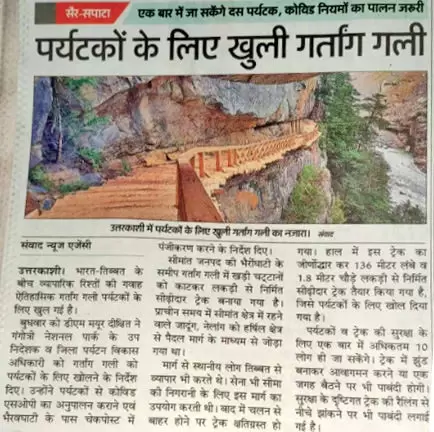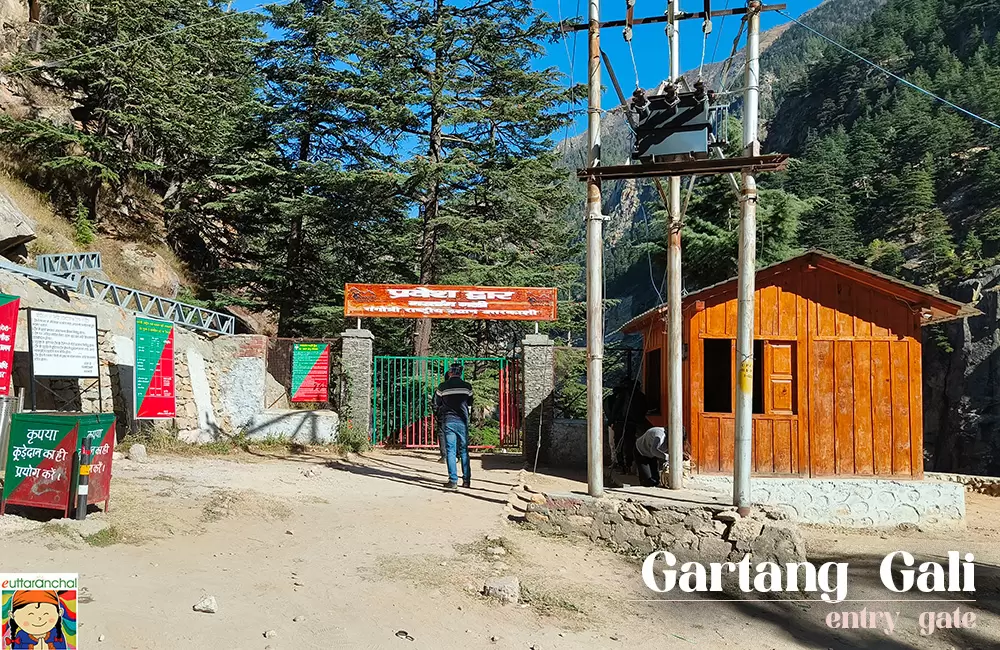Gartang Gali, a historic bridge in Uttarkashi’s Nelong Valley, once served as a vital trade route between India and Tibet. Built around 150 years ago by Pathans from Peshawar who came to trade, it facilitated exchanges across the rugged terrain of the valley. However, following the Indo-China war in 1962, the Indian government closed the bridge for strategic and security reasons, effectively ending its role in cross-border trade.
Gartang Gali is situated at a distance of 90 kms from Uttarkashi.
Gartang Gali travel guide, Location, Permits, Travel tips
Contact us for a free travel quote and itinerary for your travel plans.
Before its closure, Tibetan traders would journey to India, particularly during the Magh festival in January in Uttarkashi. They would bring woollen clothes to exchange for essential items like oil, salt, sugar, and jaggery. This tradition, however, ceased after 1962 due to security restrictions.
Residents of nearby villages, Jadung and Nelong, were also relocated to Harshil and Bagori around this time. Today, a road runs approximately 11 km east of Gangotri Dham, connecting Bhairon Ghati to Gartang Gali along the banks of the Jad Ganga.
The bridge, originally carved out of sheer rock to allow trade on foot and by pack animals across the steep valley walls, stands as a remarkable piece of engineering and cultural heritage, echoing the past connection between India and Tibet.
Gartang Gali is a moderate hike of 2kms from Forest Check Post, Lanka Bridge. It typically takes about 2 hours to complete the round trip, making it a rewarding excursion for those seeking a scenic and manageable trek.
Gartang Gali, the 136 metres long wooden bridge is now renovated at a cost of 64 lakh rupees. In 2021, the Gartang Gali was opened to tourists after 59 years. Before independence, the Tibet track was built through Uttarkashi via Nelang Valley for trade with Tibet. The track had prepared by burying an iron rod and laying wood over it in the steep cliff area near Bhaiaghati.
Gartang Gali bridge offers an exciting view of the Nelong Valley. Initially there was trade between India and Tibet through this bridge. Range officer of Gangotri National Park Mr. Pratap Singh Panwar, has said that the area is rich in flora and wildlife and rare animals such as snow leopard and Himalayan Blue Sheep.

In Gadtang Gali near Bhairav valley, a wooden terraced track has been made by cutting the steep rocks. It was connected in ancient times to the village Jadung, Nelang, living in the frontier area, through foot route from Harshil area. Local people also used to trade with Tibet through this route. The army also used this route to monitor the border.
Gartang Gali is one of the oldest trade routes from where wool, jaggery and spices etc. are sent. Such trade and related activities were a source of livelihood for the Bhutia community in Uttarkashi.
Gartang Gali is a very narrow and risky road. The closure after the Indo-China war of 1962 caused it to become dilapidated due to lack of care. Gartang Gali Bridge has been a tourist attraction since the commencement of tourism activities in Nelang Valley. Now the government is going to make it a tourist destination.
Best Time for Gartang Gali Visit: The best time to visit is between May and October. In winter, access may be restricted due to snow.
Note: Gartang Gali is also written as Gadtang gali, tang gali, Garh Tang Gali
Gartang Gali, a historic wooden bridge along a sheer cliff, is located in the Nelong Valley near the Indo-Tibetan border in Uttarkashi, Uttarakhand.
Tourists are required to register their details at Forest Check Post near Lanka Bridge, Bhairavghati and pay the entry fee. No other prior permit is required to visit Gartang Gali. Carrying plastic items is restricted. You may be required to deposit a security fee of Rs. 100 for carrying items such as plastic bottles and chip packets. This fee will be refunded when you return with the plastic items at the end of your journey.

Gartang Gali is popular place for following activities/ interests - Adventure, Historical, OffBeat.